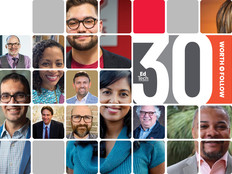As College Campuses Grow More Diverse, Technology Can Help or Hinder
No shortage of factors is contributing to the transformation of higher education that we are seeing today, from ubiquitous connectivity to new pedagogical strategies. A major change is occurring in the makeup of student populations, which are becoming much more racially, ethnically and socioeconomically diverse. As campuses move away from a predominantly white, affluent, 18- to 24-year-old demographic, this is one change that’s worth paying attention to from an IT perspective.
In 1990, white students made up 79 percent of undergraduate and graduate enrollment. By 2013, that had dropped to 58 percent. Enrollment of black, Hispanic and Asian students will continue to grow, according to projections from the National Center for Education Statistics. Between 2010 and 2021, black student enrollment is expected to jump 25 percent, Hispanic student enrollment by 42 percent and Asian student enrollment by 20 percent. In addition, students age 25 and older now make up an increasing percentage of campus populations.
Finding Affordable Tech Solutions
Demographic changes pose a challenge when institutions fail to adapt IT strategies to the needs and goals of their current students. A larger proportion of low-income or first-generation students may mean that more freshmen are arriving on campus without the technology access that other students take for granted. In a Pew Research survey of 2,400 teachers, 84 percent perceived a widening gulf between lower and higher income school districts in terms of digital technology. Once students get to college, that disparity translates into discrepancies in digital know-how and access to educational and institutional resources.
Some education experts argue that institutions have been too slow to adapt to these changes. But some institutions are making strides to ensure their IT practices are as inclusive as their admissions policies. Inspired by Congress’s 2010 decision to allocate $10 million for textbook rental programs, California State University, Monterey Bay, obtained a $300,000 grant to establish a technology rental program. Students can rent notebook computers, tablets, digital cameras and other tools at competitive prices, for periods ranging from one day to one semester. Northern Arizona University has a program to loan notebook computers to low-income and first-generation students and those with disabilities.
Adding Demographics to IT Questions
IT departments can be proactive in helping colleges strategize their responses to demographic shifts. As the EDUCAUSE Review points out, “IT professionals need to know and focus on the particular demographics of their student population.” That means asking questions, often in concert with faculty who are developing technology-based curricula, about the role of technology in students’ lives.
For instance, how comfortable are students with digital technology? Do they have the resources to participate in bring-your-own-device programs, on which faculty may base coursework and assignments? Is the institution aligning its digital resource investments with the student population’s educational goals?
For example, trends continue to push toward delivering educational and administrative services through student-friendly channels, which increasingly means mobile. But this may not account for students for whom smartphones and tablets are not affordable options. Lacking a mobile device, for example, may prohibit collaboration with classmates, participation in group projects or access to institutional resources, such as mobile registration. On the other hand, students who attempt to complete their educations with limited technology tools — say, a smartphone only, but not a notebook computer — may also find themselves at a disadvantage.
Collaboration is the Road to Success
The opening of college campuses to a broader, more representative student body is a boon to higher education. Let’s make sure that IT, faculty and students work together to ensure that when students come to campus, they have the resources and support they need. IT has a great role to play in ensuring that technology is not an obstacle to success, but one of the tools that helps students thrive.
This article is part of EdTech: Focus on Higher Education’s UniversITy blog series.










